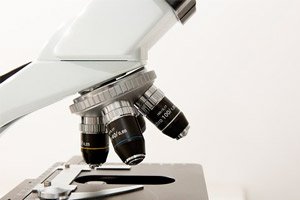
All iLive content is medically reviewed or fact checked to ensure as much factual accuracy as possible.
We have strict sourcing guidelines and only link to reputable media sites, academic research institutions and, whenever possible, medically peer reviewed studies. Note that the numbers in parentheses ([1], [2], etc.) are clickable links to these studies.
If you feel that any of our content is inaccurate, out-of-date, or otherwise questionable, please select it and press Ctrl + Enter.
Trichinellosis test: antibodies to Trichinella spiralis in blood
Medical expert of the article
Last reviewed: 05.07.2025

Antibodies to Trichinella spiralis are normally absent in blood serum.
The causative agent of trichinellosis is the nematode Trichinella spiralis. The disease is accompanied by fever, development of edema, myalgia and eosinophilia in the blood. In severe cases, myocardial and central nervous system damage is possible.
For early serological diagnostics of trichinellosis, the IgG antibodies are determined by the ELISA method. The sensitivity of ELISA reaches 90-100%, the specificity is 70-80%. Specific antibodies appear in the blood of the infected person during the period of migration of trichinella larvae and their concentration in the muscles. They are detected in serological reactions in people infected by eating meat of domestic animals (pigs) with a high or medium intensity of trichinella invasion (200-500 larvae per 1 g of meat) on the 15th-20th day after infection. With a lower intensity of invasion, the time for detecting antibodies is extended. When people are infected from wild animals (for example, bear, wild boar, badger, nutria), antibodies are detected after 4-6 weeks. Over the course of 2-4 months, the antibody titer may increase, and 4-5 months after infection, it begins to decrease, but remains at the diagnostic level for at least 1.5 years, and in case of intensive invasion - up to 2-2.5 years or more. In patients with suspected trichinellosis, with the initial negative or questionable result of the reaction, the blood test must be repeated after 10-14 days, the increase in titers confirms the invasion of trichinella. Serological diagnosis of trichinellosis is based on a 4-fold increase in the antibody titer. If it is impossible to test the serum at the onset of the disease, the blood serum obtained during the convalescence period is tested.
Specific therapy with trichinellicides causes an increase in antibody titers, which remain in diagnostic values for 6-12 months and then decrease. Persons with suspected trichinellosis who have received preventive treatment undergo serological testing 2-3 weeks after treatment. In those who have had trichinellosis, antibodies persist for a long time - up to 2 years or more.
False positive test results are more often recorded during the acute phase of a number of helminthiases (opisthorchiasis, clonorchiasis, etc.), in connection with which a thorough study of the clinical and epidemiological history is necessary for differential diagnosis.
Indications for serological tests
- the presence of clinical symptoms (fever of unknown genesis, facial edema, myalgia, eosinophilia, etc.), myocarditis, meningoencephalitis of unknown genesis, leukemoid reaction of the eosinophilic type of unknown genesis in patients who have eaten pork, bear meat, wild boar meat and other animals - potential hosts of Trichinella;
- deciphering cases of group incidence of trichinellosis (outbreaks) and identifying contacts in endemic areas (in non-endemic areas: if there are indications in the epidemiological history of eating meat from animals that are potential hosts of trichinella).

